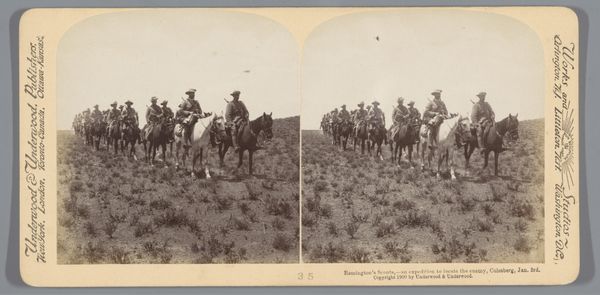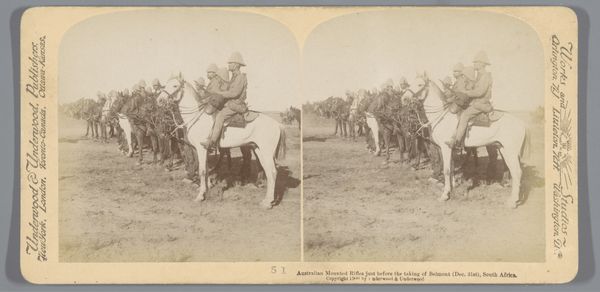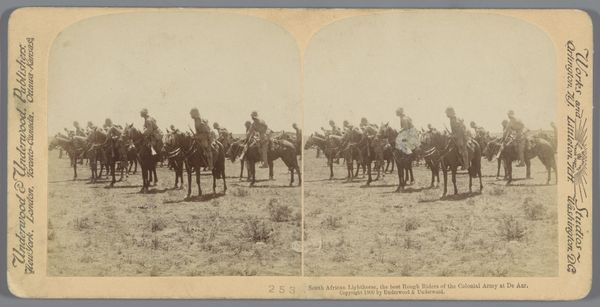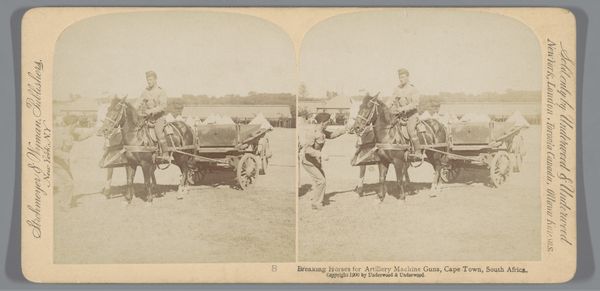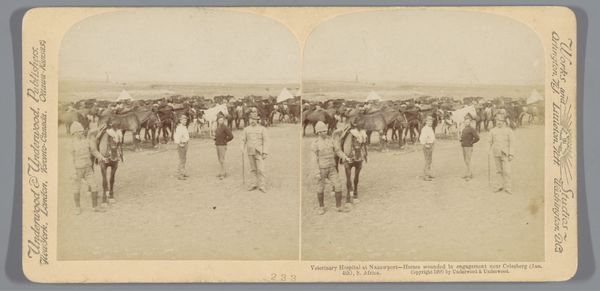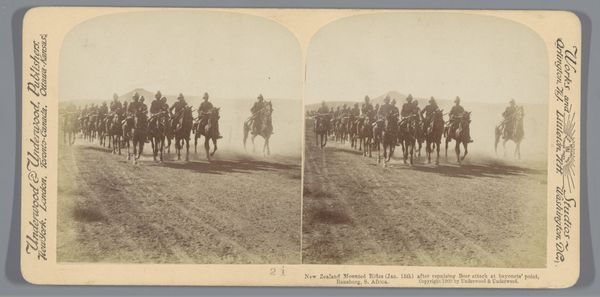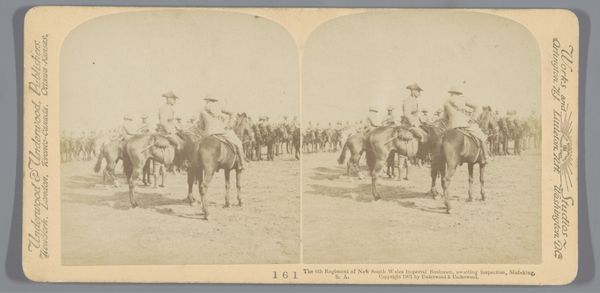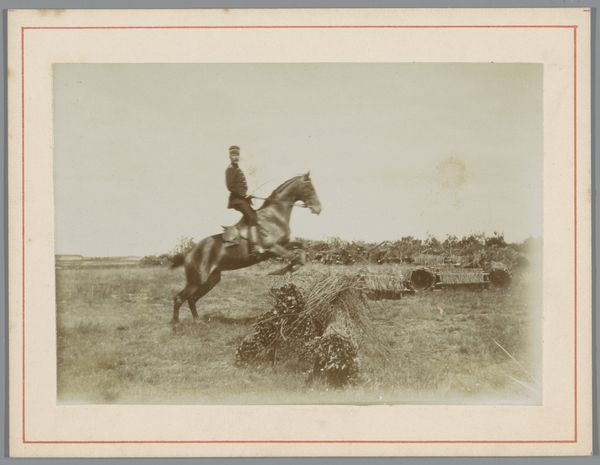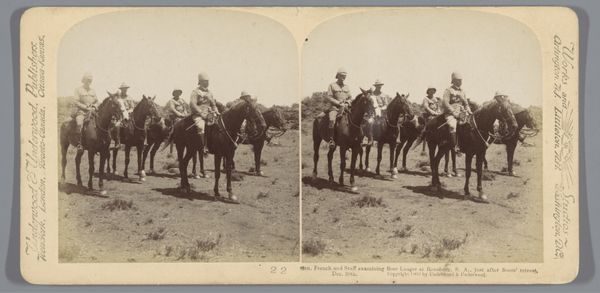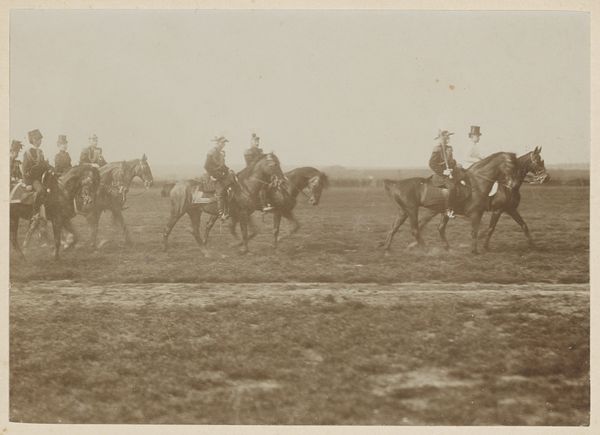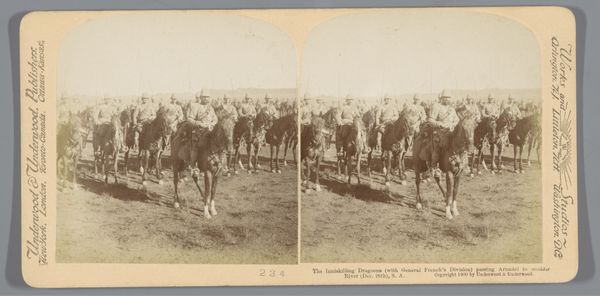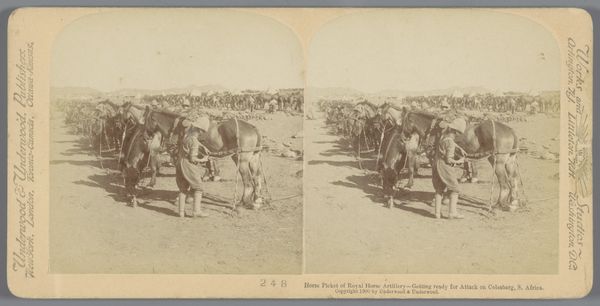
Britse en Franse soldaten die vermoedelijk geweren keuren in Zuid-Afrika 1900
0:00
0:00
Dimensions: height 88 mm, width 178 mm
Copyright: Rijks Museum: Open Domain
Curator: Looking at this gelatin silver print by Underwood & Underwood from around 1900, titled "Britse en Franse soldaten die vermoedelijk geweren keuren in Zuid-Afrika," my immediate thought goes to…loneliness. Editor: Loneliness? An odd initial read for a photograph filled with so many figures, though at a distance. Do explain! Curator: It’s the overwhelming vastness of the landscape that contrasts against the rigid posture of the soldiers. It feels almost desolate despite the assembly of bodies. It reminds me of critiques of colonial narratives, particularly their alienation from the lands they occupied, enforcing power dynamics amidst a sense of estrangement. Editor: I get what you’re saying. It’s visually very stark, yes. I'm sort of drawn to the technical aspect. How did they even stage such a photograph with horses back then? Curator: Consider the historical context: this photograph likely coincided with or immediately followed the Second Boer War. Pictorialism, the style employed, used soft focus to evoke atmosphere and romantic notions about conflict that really masked brutal realities of imperialism, sanitizing it through romantic, painterly effects in photography. The image served perhaps less to reflect, and more to reassert, colonial control. Editor: I'm finding a hard time moving past the sepia tones. I bet if it was in full, glorious color, the message would be completely different. There’s this layer of...dusty nostalgia that softens any harder edges the photograph might otherwise present. Curator: Nostalgia is often an ideological tool, and it's often deployed by those in positions of power. Consider how narratives around the past become ways of perpetuating contemporary disparities along lines of gender, race and class. Nostalgia becomes another form of symbolic violence. Editor: (chuckles) Well, aren't you a ray of sunshine? Alright, fair point. Thanks for snapping me back to the present and expanding the frame. Curator: It’s crucial we continuously critique those constructed legacies!
Comments
No comments
Be the first to comment and join the conversation on the ultimate creative platform.
